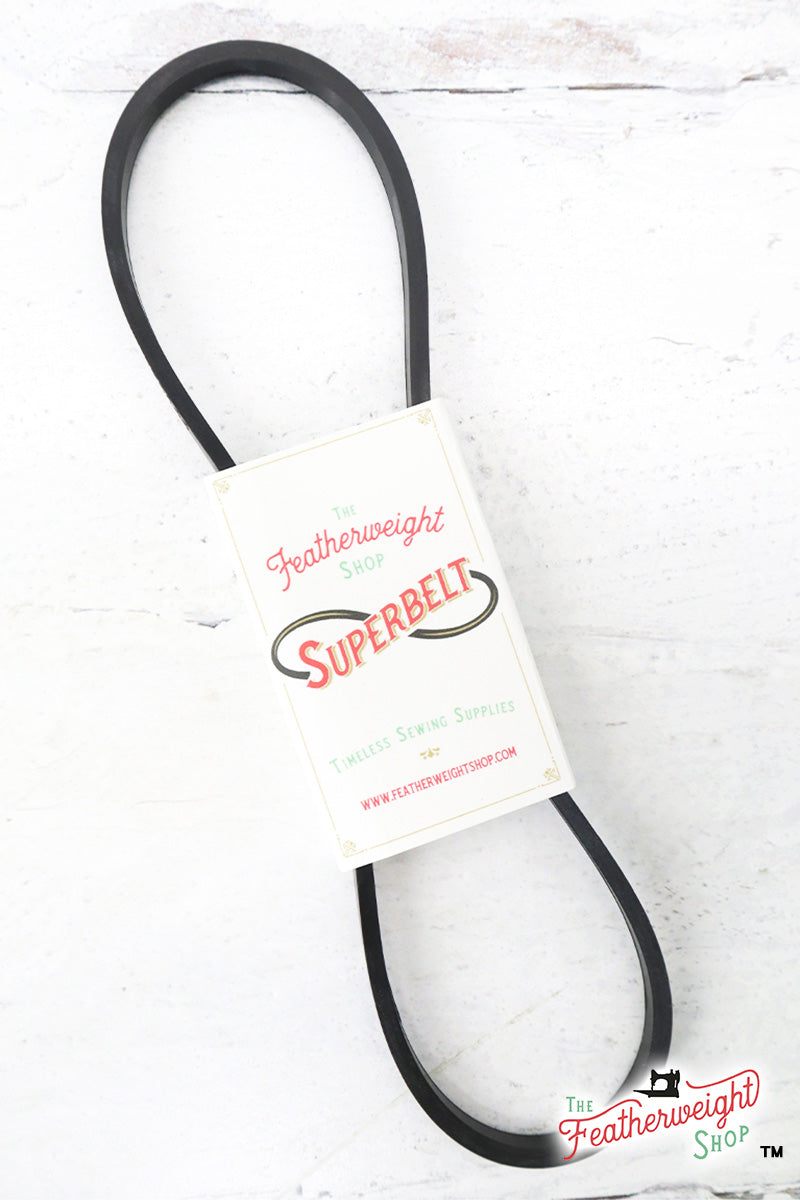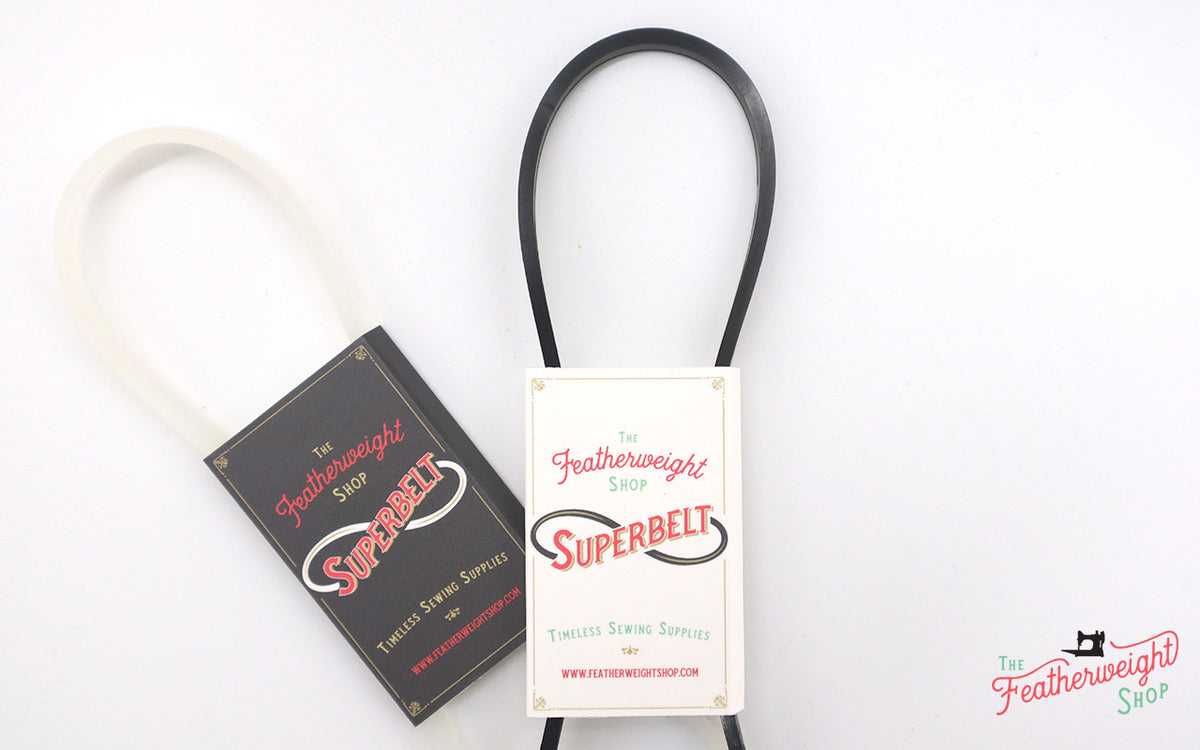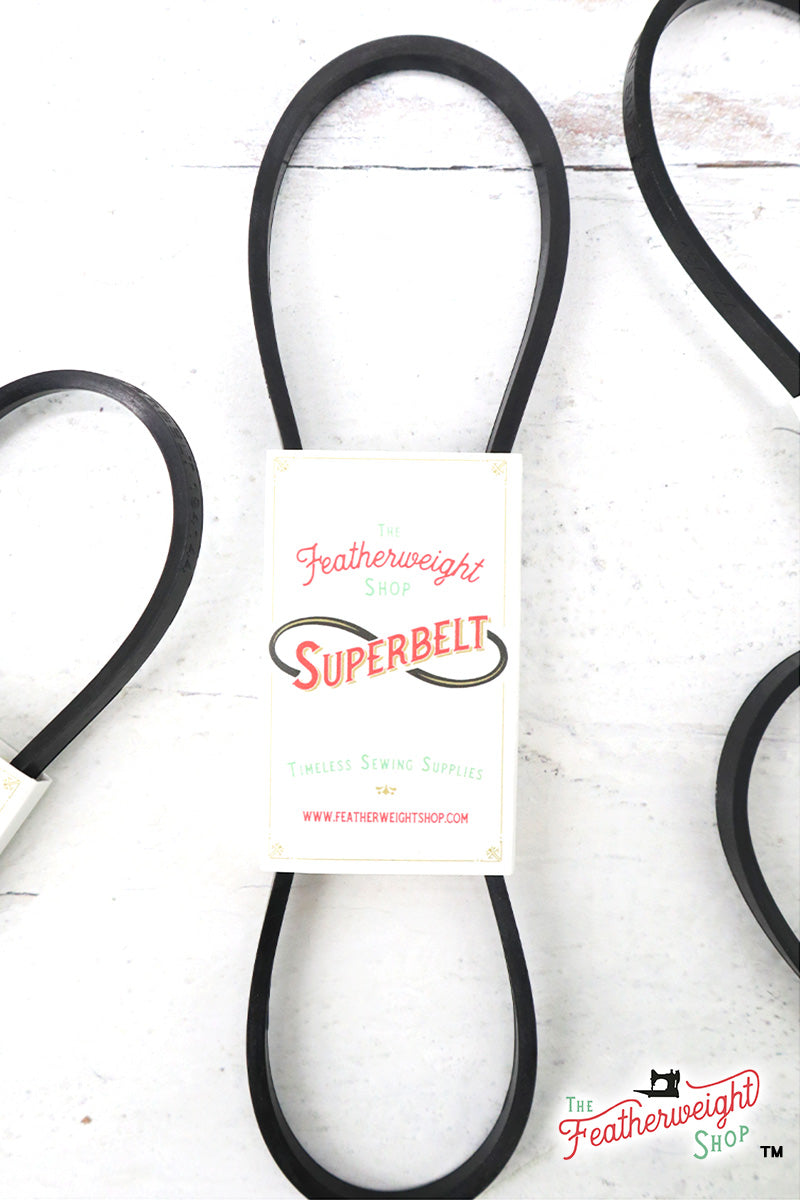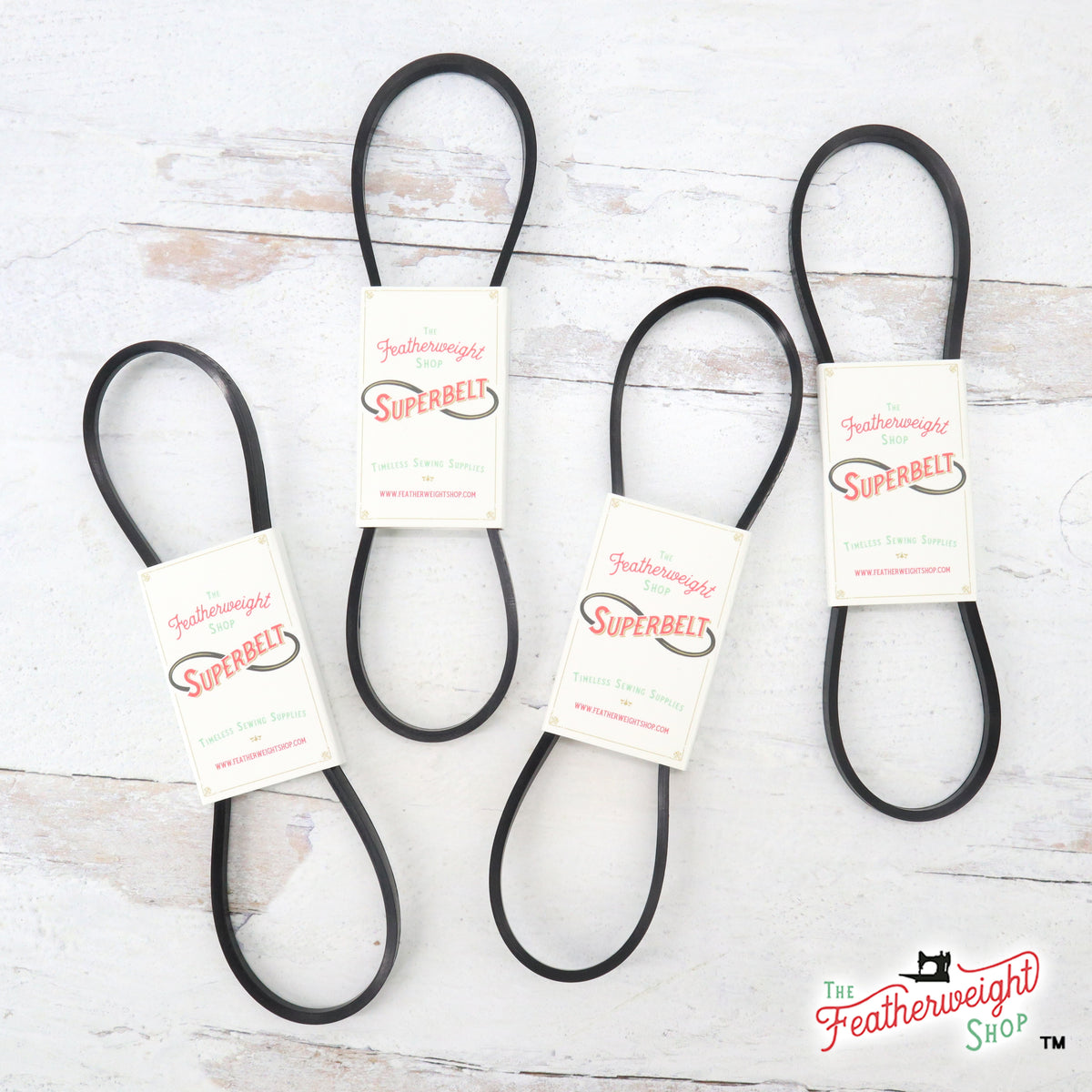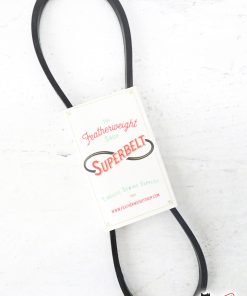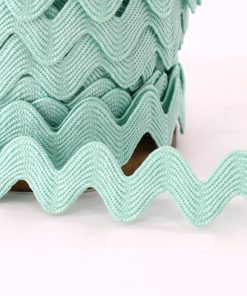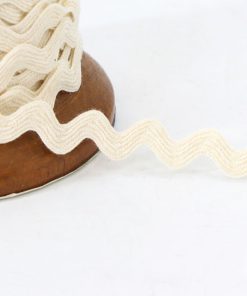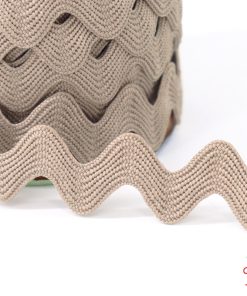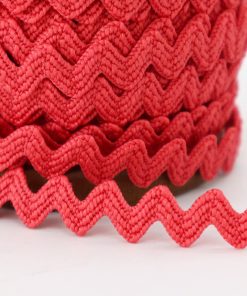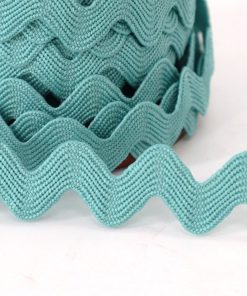SUPERBELT, Black V-Belt for Singer Featherweight 221 or 222 The Singer Featherweight Shop
$ 10,95 $ 6,57
We are very excited to introduce the all NEW Superbelt! This product has been in development for the last couple of years, and we are thrilled that there is finally a quality replacement belt for the Singer Featherweight. These new belts are much softer, allowing the motor to run much faster with less resistance. Because these belts allow the machines to work more efficiently, the motors are under less strain with normal sewing. This will extend the life of your 221 & 222 Featherweight motor.
The Superbelt is available in Black or Translucent White.
The video, under the video tab, will give step-by-step instructions for how to change and install the new Superbelt as well as explain the advantages of a soft, pliable belt.
How to Replace and Install the Featherweight Belt
To replace and install the belt you will need to raise the motor up. To raise it, there is a screw on the back of the motor housing (seen from the front of the machine at the right side, behind the hull). Standing over the machine, with an appropriately-sized screwdriver in your right hand and your left hand holding the motor (you’re leaning over the machine); you’ll unscrew the screw just slightly and adjust your motor up a little bit so that it can loosen your current belt all the way. Remove the belt from around the motor pulley and handwheel and replace it with the new belt in the same manner, making sure that it is tucked into the correct position into the handwheel.
If you want to protect the finish on your machine; place a soft cloth between the screwdriver and the machine’s hull or you can scratch the finish by trying to access that oddly-placed screw on the motor housing bracket.
*****
Update! One of the advantages to the Superbelt is its superb grip to the handwheel. In the two years of testing, though, we have discovered that there are a few handwheels that may have a slight variation in their original manufacturing, and because the belt grips so well, it is possible that this will cause the belt to climb slightly to one side. No worries at all if this happens, (it just means your belt is gripping extremely well, which is a good thing!), but with a very simple remedy, your belt will be situated as it should be right away.
Superbelts are treated with what’s called belt dressing in the manufacturing process. Likewise, at the autoparts store, some automotive belts have a dusting of belt dressing, too. Automotive belts are made and dressed differently, of course, being used inside a vehicle engine, but the concept is similar. Belt dressing actually helps with the gripping process! So, on the rare occasion that the Superbelt grips extra firmly to the side of the Featherweight handwheel, rubbing a very, very miniscule amount of cornstarch around the belt surface will actually prevent this from happening. Cornstarch will not hurt your machine, and it truly is such a tiny amount that when it is rubbed around the belt surface, it disperses evenly, allowing the belt to retain its cosmetic appearance. One gal in the shop treated her Superbelt ever-so-slightly with a bit of cornstarch and her Superbelt has remained perfectly seated ever since!
Watch Carmon’s updated video tutorial, under the video tab, for a demonstration.
For those who prefer the plastic, lugged belts, we offer those as well.
Fast Shipping & Professional Packing
We have a range of shipping options due to our long-term partnership with UPS FedEx DHL. Our warehouse personnel will pack every item to our exacting specifications. Prior to shipping your items will be thoroughly examined and secured. Each day, we ship to thousands of clients in many countries. This demonstrates our dedication to become the biggest online retailer on earth. There are distribution centers and warehouses located in Europe and the USA.
Note: Orders that include more than one item are assigned a processing time depending on the item.
We will carefully examine all items ordered before shipping. Today, the majority of orders will be shipped within 48 hours. Delivery time ranges between 3-7 days.
Returns
Stock is dynamic, and cannot be fully controlled by us because of the involvement of many entities, including the factory as well as our warehouse. This means that the actual stock could alter at any time. It's possible that you may not receive your order once the order has been made.
Our policy runs for 30 days. If you have passed 30 days without a trace since the purchase however, we're unable to give you a refund or exchange.
In order to be eligible for a refund your product must be unopened and in the same condition as when you received it. It must also be returned in its original packaging.
Related products
Craft Measuring & Marking Tools
Alphabitties – Alphabet & Number Tags by It’s Sew Emma The Singer Featherweight Shop
Ribbons & Trim
1/4″ Inch PUMPKIN VINTAGE TRIM RIC RAC by Lori Holt (by the yard) The Singer Featherweight Shop
Vintage Advertisements
Advertisement Tin Sign, Replica Featuring the Singer Featherweight The Singer Featherweight Shop
Ribbons & Trim
1/4″ Inch CLOUD VINTAGE TRIM RIC RAC by Lori Holt (by the yard) The Singer Featherweight Shop
Vintage Advertisements
Advertisement Leaflets, Replica Featuring the Singer Featherweight The Singer Featherweight Shop
Vintage Advertisements
Ribbons & Trim
1/4″ Inch STEEL VINTAGE TRIM RIC RAC by Lori Holt (by the yard) The Singer Featherweight Shop
Ribbons & Trim
5/8″ Inch STEEL VINTAGE TRIM Large RIC RAC by Lori Holt (by the yard) The Singer Featherweight Shop
Ribbons & Trim
1/4″ Inch COTTAGE VINTAGE TRIM RIC RAC by Lori Holt (by the yard) The Singer Featherweight Shop
Sewing Machine Replacement Parts
Amoeba Feed Cover Plate, Singer (Vintage Original) The Singer Featherweight Shop
Ribbons & Trim
1/4″ Inch JADE VINTAGE TRIM RIC RAC by Lori Holt (by the yard) The Singer Featherweight Shop
Ribbons & Trim
1/4″ Inch RILEY GREEN VINTAGE TRIM RIC RAC by Lori Holt (by the yard) The Singer Featherweight Shop
Ribbons & Trim
5/8″ Inch DENIM VINTAGE TRIM Large RIC RAC by Lori Holt (by the yard) The Singer Featherweight Shop
Ribbons & Trim
1/4″ Inch SONGBIRD VINTAGE TRIM RIC RAC by Lori Holt (by the yard) The Singer Featherweight Shop
Ribbons & Trim
3/8″ Inch IVORY Cotton RIC RAC from France (sold by the yard) The Singer Featherweight Shop
Vintage Advertisements
Advertisements, Rare Singer ITALIAN – (Vintage Original) The Singer Featherweight Shop
Ribbons & Trim
1/4″ Inch PEONY VINTAGE TRIM RIC RAC by Lori Holt (by the yard) The Singer Featherweight Shop
Ribbons & Trim
1 1/2″ Inch JUMBO RIC RAC by Riley Blake – CREAM (sold by the yard) The Singer Featherweight Shop
Ribbons & Trim
1/4″ Inch NUTMEG VINTAGE TRIM RIC RAC by Lori Holt (by the yard) The Singer Featherweight Shop
Ribbons & Trim
1/4″ Inch PEBBLE VINTAGE TRIM RIC RAC by Lori Holt (by the yard) The Singer Featherweight Shop
